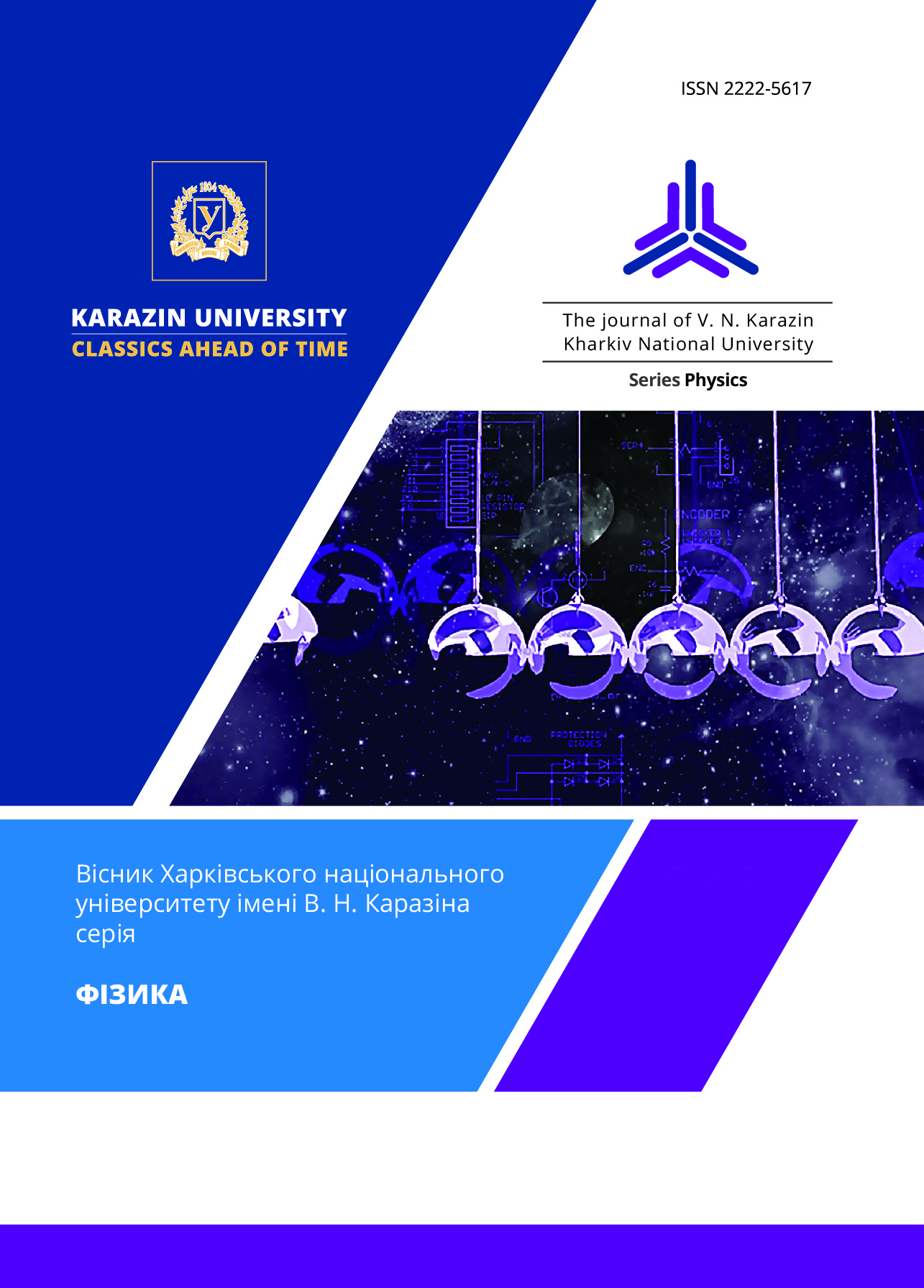Cationic distribution in nanoparticles of ferrites of ZnxFe3-xO4 composition
Abstract
Nanodispersed powders of zinc-substituted magnetite ZnxFe3-xO4 with the content of zinc ions x = 0.0 ÷ 0.5 were synthesized by the method of chemical condensation. X-ray spectra showed single-phase powders and their belonging to the cubic structure of spinel-type ferrite. According to the results of X-ray and electron microscopic studies, the particle sizes for all synthesized systems were determined. The average particle size of ferrites according to data obtained from X-ray spectra using the Selyakov-Shearer formula was ~ 7 nm, with a maximum particle size of about 10 nm. According to microscopy, the particle size range was 3 ÷ 13 nm with an average value of 6.5 nm. The study of cation distribution was carried out in two ways. The Poix method was chosen as the first method, which is based on the relationship between the lattice parameter a and the characteristic cation-anion distances. The second method was chosen to determine the cation distribution by measuring the magnetization. The formula for coupling the specific magnetization at 0 K with the number of Bohr magnetons per formula unit was used. An amendment was introduced into the formula due to the small particle size and, accordingly, the large share contribution of the near-surface region with a "canted" magnetic structure. The parameters of the crystal lattice and the magnetization were measured. The obtained data formed the basis of cation distribution calculations, according to which ferrites with a concentration of x ≤ 0.2 have an inverted spinel structure, ie zinc ions are localized only in octahedral positions, and at a concentration of 0.3 ≤ x ≤ 0.5 – a mixed spinel structure with a minimum degree of inversion of 80% at a concentration of zinc ions x = 0.5.
Downloads
References
T.R. Tatarchuk, NB Hamanyuk, DV Protsky. Solid State Physics and Chemistry, 9 (2), 363-367, (2008) (Т.Р. Татарчук, Н.Б. Гаманюк, Д.В. Процький. Фізика і хімія твердого тіла, 9 (2), 363-367, (2008)). [In Russian]
S. Krupička. Physik der Ferrite und der Verwandten magnetischen oxide, (Springer Fachmedien Wiesbaden GmbH, 1973) 780 P. https://doi.org/10.1007/978-3-322-83522-2
Z. Sizova, A. Krishtal', E. Levitin, A. Koval' Abstracts of Paper of the VIII International Conference «Physical Phenomene in Solids», Kharkiv, Ukraine, 143, (2007).
E. Shelekhov, Т. Sviridova. Met. Sci. Heat Treat., 42 (7), 309-313 (2000). https://doi.org/10.1007/BF02471306
N. Kachanov, L. Mirkin. Rentgenostrukturnyy analiz. Prakticheskoye rukovodstvo. (Mashgiz, Moscow, 1960) 215 p. (Н. Качанов, Л. Миркин. Рентгеноструктурный анализ. Практическое руководство. (Машгиз, Москва, 1960) 215 с). [In Russian]
Poix P. Compt. Rend. Acad., 292 (5), 1191-1196, (1981).
S.S. Lisnyak, M.P. Matkivsʹkyy, I.Y. Perkatyuk. Ukr. khym. zhurn., 69 (8). 88-93, (2003). (С.С. Лісняк, М.П. Матківський, І.Й. Перкатюк. Укр. хим. журн., 69 (8). 88-93, (2003)). [In Russian]
Y. Sitidze, H. Sato. Ferrites. (Mir, Moscow, 1964). 407 p. (Ю. Ситидзе, Х. Сато. Ферриты. (Мир, Москва, 1964). 407 с). [In Russian]
J. Smit, J. Wijn. Ferrites. Physical properties of ferrimagnetic oxids in relation to their technical applications. (Philips Technical Library, 1959) 369 p.
J. Coеy. Phys. Rev. Lett. 27 (17), 1140-1142, (1971). https://doi.org/10.1103/PhysRevLett.27.1140








3.gif)
